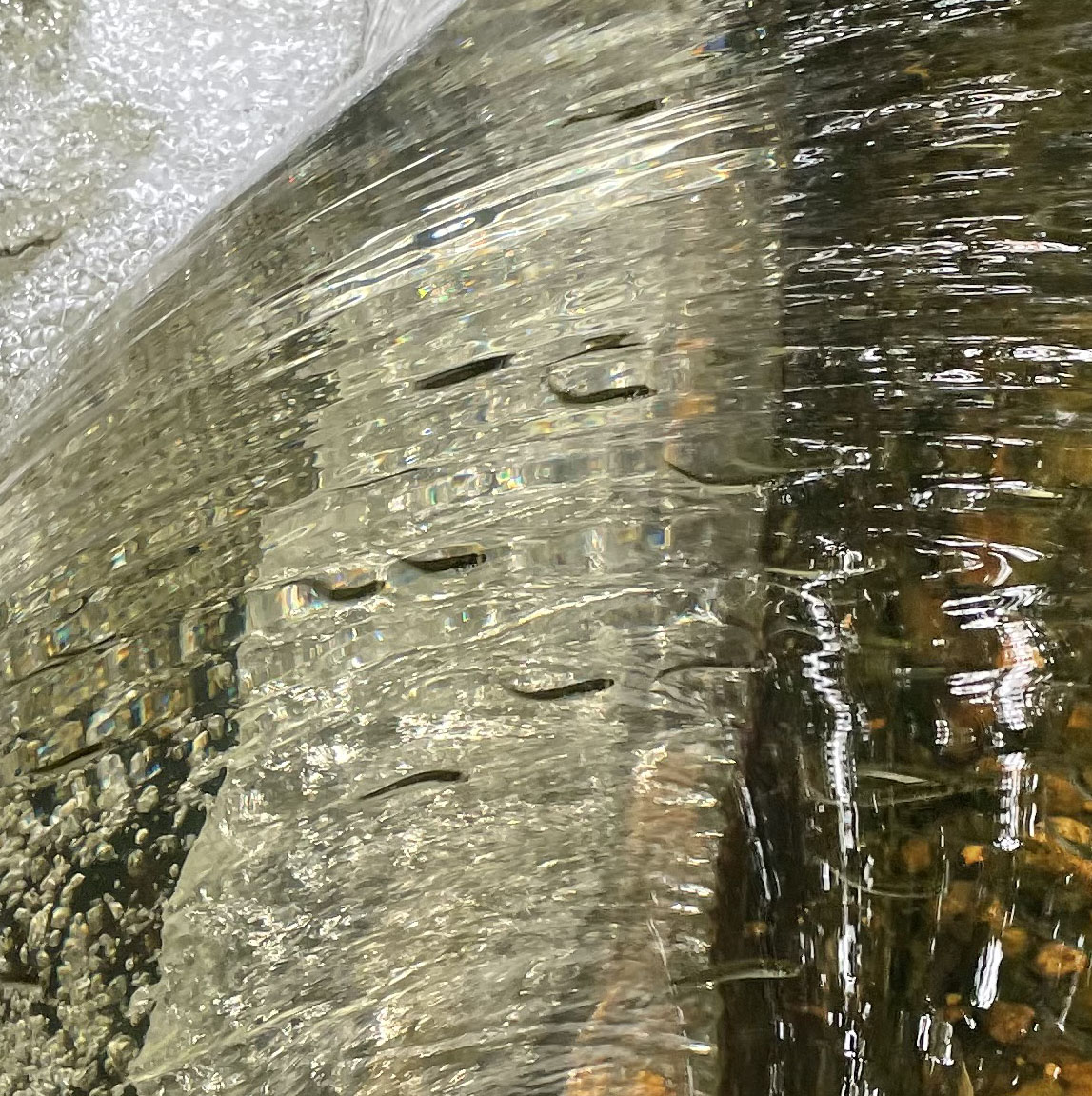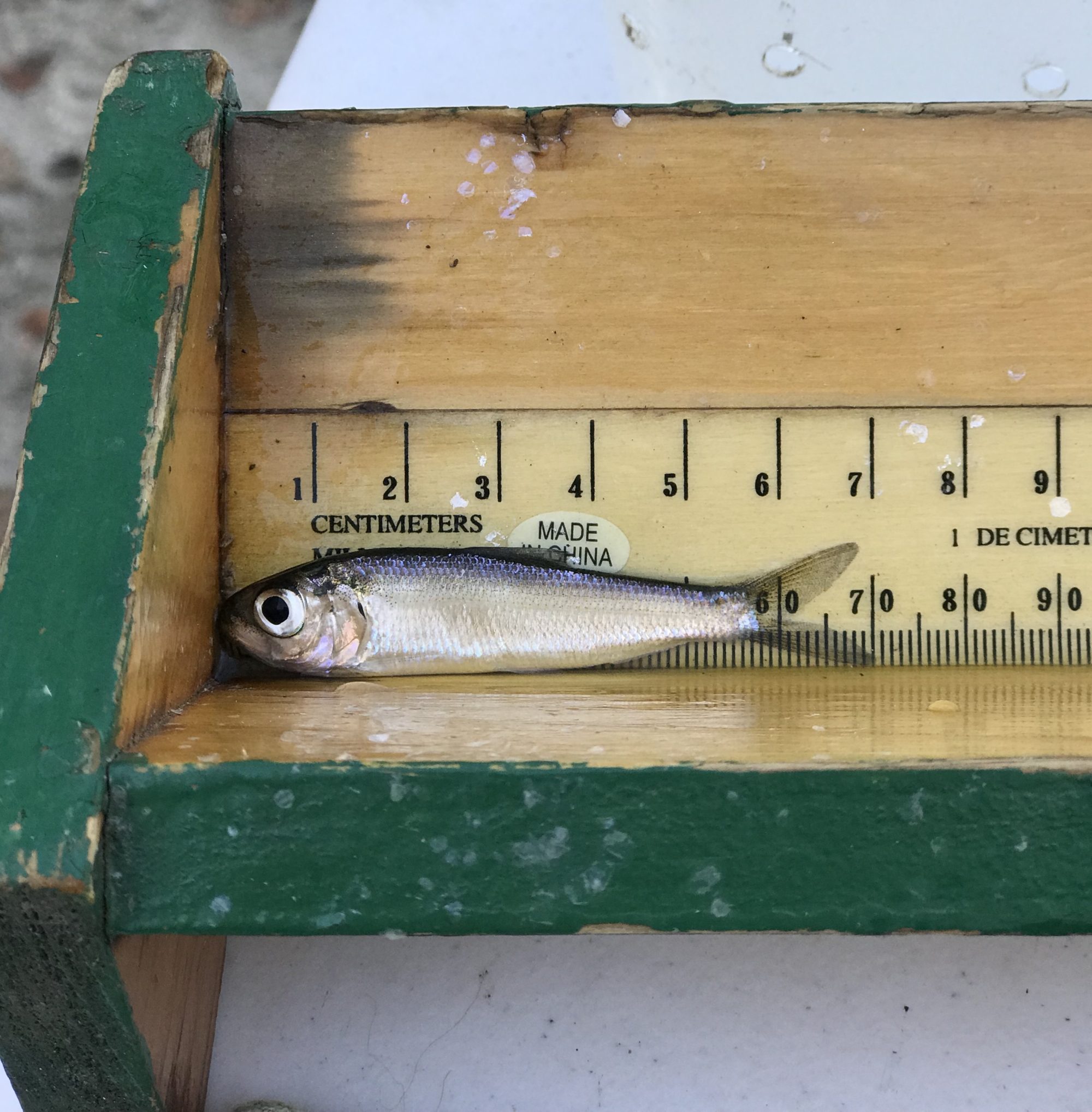With Fish Ladders in Place, Scientists Turn Their Attention Towards Alewife Out-Migration Patterns
The study will monitor the ability of juvenile alewives to leave Connecticut riverways and successfully reach the Long Island Sound
By Cheyenne Ellis
A new study being conducted by a team of scientists from the University of Connecticut is looking beyond typical studies on anadromous fish and asking a bigger question: the fish ladders are in place, the eggs are laid, but can the juvenile fish actually get out of the river and into the Long Island Sound?

Biologist Eric Schultz and his team seek to answer just that in their new study which will examine the effect of low water levels, or low-flows, on out-migrating juvenile alewives in Connecticut rivers. The project, which will commence in the summer of 2021 and continue on to the summer of 2022, has been awarded a Long Island Sound Study research grant of $231,013, with $123,000 in matching funds.
“One of the things that became very clear to me as we were working with some of these [fish] populations down here on the coast is that juvenile alewives are having difficulty leaving the pond they were born in during some periods of the summer because the stream dries up,” said Dr. Shultz, a professor at the University of Connecticut and a member of the NOAA Technical Expert Working Group on River Herring. He has previously done other research on anadromous fish that was funded by CT Sea Grant. “Without a real quantification of how widespread the problem is, and without a real understanding of how much that impairs the populations, we felt that we needed to undergo a focused study on the topic.”
Low-flows could have a big impact on the conservation efforts working to protect river herring. Both types of river herring, alewives and blueback herring, have been on the conservation radar in New England and New York for decades, but their decline dates all the way back to colonial America. Prior to the arrival of the colonists, the sheer number of fish in a spawning run had the ability to turn rivers silver in the early spring months. With the arrival of the European settlers came an increase in the exploitation of herring and eventually, the creation of dams. While some of these were built as a flood-prevention method or a source of irrigation for nearby farms, the vast majority of dams were built in order to harvest hydroelectric energy that could power nearby factories. These dams, while providing many benefits to the nearby communities, would ultimately come to prevent migrating fish from getting to certain upstream parts of the river.
There have been extensive efforts over the last 40 years to help adult alewives reach their spawning grounds including installing fish ladders (structures that allow migrating fish get over and around a dam), creating bypass channels, and even removing dams altogether. For a while, these strategies appeared to be effective. Alewife populations skyrocketed in the decade following their implementation, only to collapse again in the 1990s for reasons that are still unknown.
Alewives in Long Island Sound
The importance of alewives to the Long Island Sound is indisputable—they are the base of the coastal food chain in the Northeast. Migrating river herring are an important food source for both local rivers and the Sound, where they are eaten by nearly everything that resides there—protected seabirds, larger fish, mammals, turtles, and even whales have been known to snack on them. Some predatory fish like the striped bass will even follow schools of alewives upriver while they are spawning to maintain access to an easy food source.
In addition to being an energy source for other species, alewives are also an important part of the nutrient cycle, bringing nutrients to and from their spawning grounds. They distribute these nutrients through the eggs they lay, their excreted materials, and their bodies once they die. The eggs are also a particularly important protein source for smaller aquatic species such as zooplankton, clams, and insects.
Alewives also play other hidden roles in the ecosystem. Silver clouds of migrating fish make the perfect cover for juvenile salmon heading out to sea for the first time, as well as adults returning upriver to breed. Without their cover, salmon face an increased risk of predation from large birds and fewer would survive the migration.
Currently, alewives are the only confirmed host for a type of freshwater mussel called the alewife floater (Anodonta implicata). When released as larvae, these young mussels must attach themselves to an alewife’s fins or gills in order to survive. Without access to alewives, these mussels will disappear from certain parts of Connecticut rivers. Their loss would be a devastating blow to the native freshwater mussel populations already at-risk from water pollution and invasives like the zebra mussel. Healthy mussels provide important filtering abilities, as well as act as bioindicators for the health of the river.
Unfortunately, our freshwater mussels are in trouble; The US Fish and Wildlife Service estimates that of the nearly 300 varieties in the United States, 70 percent need some sort of special protection.
Taking Steps Towards Alewife Restoration
After becoming aware of potential connectivity issues at Bride Brook, Schultz teamed up with hydrologist Dr. James Knighton and GIS specialist Cary Chadwick, both also from the University of Connecticut, to complete a six-step research study investigating the effect of low-flows on juvenile alewives. While not necessarily the only challenge to juvenile out-migration, low-flows appear to have one of the largest potential impacts. Their research will survey several different Connecticut river locations including Bride Brook, Whitford Brook, a portion of the Pattagansett River, Fishing Brook, and the Branford Supply Pond. The first two steps, which are already underway, include collecting existing data and characterizing the hydrological conditions of herring streams that may result in low-flows.
“There are competing processes that are driving low streamflow,” said Dr. Knighton, who is an assistant professor in hydrology at the University of Connecticut. “Trees take up water from underground and transpire it. In natural environments, about half of all rainfall is transpired, and the other half becomes streamflow. Across the Long Island Sound watershed, many residents are watering lawns, which also pulls water away from streamflow…. Pinning this down will be critical for developing accurate predictions of future conditions.”

The team will also create soil and water hydrologic models that will help predict the likelihood and location of low-flows. The next stage of the study involves the surveying of migrating juvenile alewives. They will be using photo equipment set up at each site to collect data on the seasonal pattern of alewife out-migration. In addition, they will be sampling juvenile fish as they are leaving to take growth assessments. The gathered information will be combined with the hydrological condition findings to create an online map viewer that will show stream connectivity loss risks to water resource managers.
The Future of Alewives with Climate Change
The future success of alewives is going to rely on more than just installing fish ladders. Climate change and other anthropogenic threats such as water pollution and overfishing play a key role in the success and restoration of the once-plentiful alewife populations of the Long Island Sound. The Northeast Climate Science Center predicts that northeastern states, which have already seen an average temperature increase of 1°C (or 33°F), will continue to experience drier summers, with most of the precipitation coming down in extreme weather events, rather than gradually throughout the season. This pattern increases the risk of droughts in between the larger rainfalls. The team from the University of Connecticut is well aware of these risks.
“I think there will be increasing atmospheric water demand with increasing temperatures and intensifying precipitation,” said Knighton. “More water demand means more evaporation and transpiration from soil and groundwater…. Any increase in evapotranspiration should directly reduce streamflow. More intense storms mean more runoff and less groundwater recharge and therefore, less baseflow in streams.”
With the online tools this study will create, municipalities will be able to see which streams are at risk of connectivity loss and may be able to shift their water usage to another site to prevent overdrawing from the rivers. The study will also pave the way for future research into the effects of climate change on alewives by creating a basis for juvenile migration times and hydrological conditions of Connecticut waterways, which other studies can use when designing their own research.